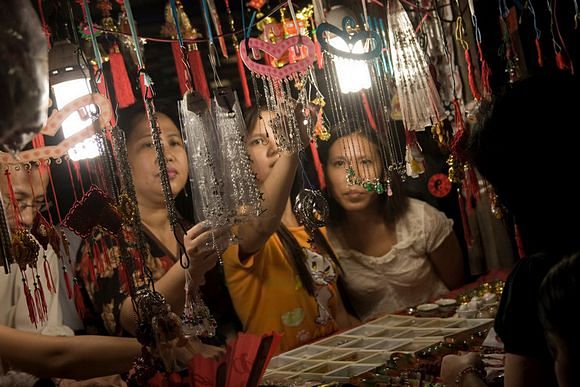Michele Ford and Jemma Purdey
Chinese Indonesians are feeling confident againHenri Ismail |
Since Reformasi, Indonesia's ethnic Chinese community has experienced dramatic change in their relationships with the state and with other Indonesians. As the contributions to this edition suggest, this change has deeply affected the way Chinese Indonesians think and feel about themselves, their history and their place in the Indonesian nation – and indeed the world.
Jemma Purdey’s article ‘A common destiny ’ sets the scene for a journey through the tumult of the last ten years and its implications for Indonesia’s Chinese community. It is the first of five articles that examine the fluid political millieu in which Chinese Indonesians continue to struggle to create a space for themselves as individuals and as a community. As Wahyu Effendi points out, despite legislative reform Chinese Indonesians are too often required to provide proof of citizenship. His point that Chinese Indonesians are never considered to be Indonesian enough is taken up by Christianto Wibisono and Christine Tjhin, who weigh up the challenges of political participation in a context where Chinese Indonesians have yet to be accorded full equality. Finally, Damai Sukmana – a refugee now resident in the United States – reflects on the ongoing trauma and legal problems faced by asylum seekers who chose not to stay in Indonesia after the anti-Chinese violence of 1998.
The theme of trauma is taken up by Yeng-ling Tsai , Juliana Wijaya and Monika Swasti Winarta, who explore the Chinese community’s attempts to come to terms with the past. Monika’s commentary on the hauntingly beautiful photographs of Glodok taken by Paul Kadarisman in the aftermath of the May riots reminds us of the deep scars of this most recent wave of violence. Juliana’s moving tale of the commemoration of the violence of an earlier time in Banyuwangi and Yeng-ling’s evocative description of Medan’s Teochiu Huikuan building and its sinister past provide us with a sense of the longevity of persecution experienced by the Chinese community. Importantly, Juliana and Yeng-ling also send a message of hope, speaking as they do of the community’s efforts to draw strength from its fallen heroes and to reclaim a happier past.
Chinese Indonesians’ attempts to reinvent themselves and establish a new place in Indonesian society has led not only to increased political engagement and more open discussions of former oppressions, but also to a blossoming of cultural expression. Aimee Dawis reminds us that many individuals successfully negotiated the barriers put before the Chinese community in Suharto’s Indonesia. There is no doubt that those barriers are now far less daunting than they were a decade ago. A key aspect of the new openness pertains to religious and cultural expression. The incorporation of Chinese rituals such as the lion dance into official life in Indonesia and the celebration of Imlek, described by CY Hoon, demonstrates a truly remarkable shift in official attitudes – and as Anne Dickson and Juliette Koning note, it is far easier now for Chinese Muslims and Christians to celebrate their religious identity. At the same time, however, members of the Chinese community remain tentative about these new opportunities, fearing that too exuberant a response may prompt a return to the past. This tension between fear and optimism is a creative one, which as Charlotte Setijadi-Dunn explains, has produced a rich array of cinematic explorations of what it means to be Chinese in Indonesia.
This edition seeks to help document the transformation of this community, which as Wahyu Effendi reminds us, is as much about the maturing of Indonesia as a nation as about the Chinese Indonesians themselves. ii
Michele Ford (michele.ford@usyd.edu.au) researches Indonesian social movements at the University of Sydney, where she chairs the Department of Indonesian Studies.
Jemma Purdey (jemma.purdey@adm.monash.edu.au) is an ARC postdoctoral fellow based at Monash University’s Centre for Southeast Asian Studies.
Inside Indonesia 95: Jan-Mar 2009{jcomments on}
